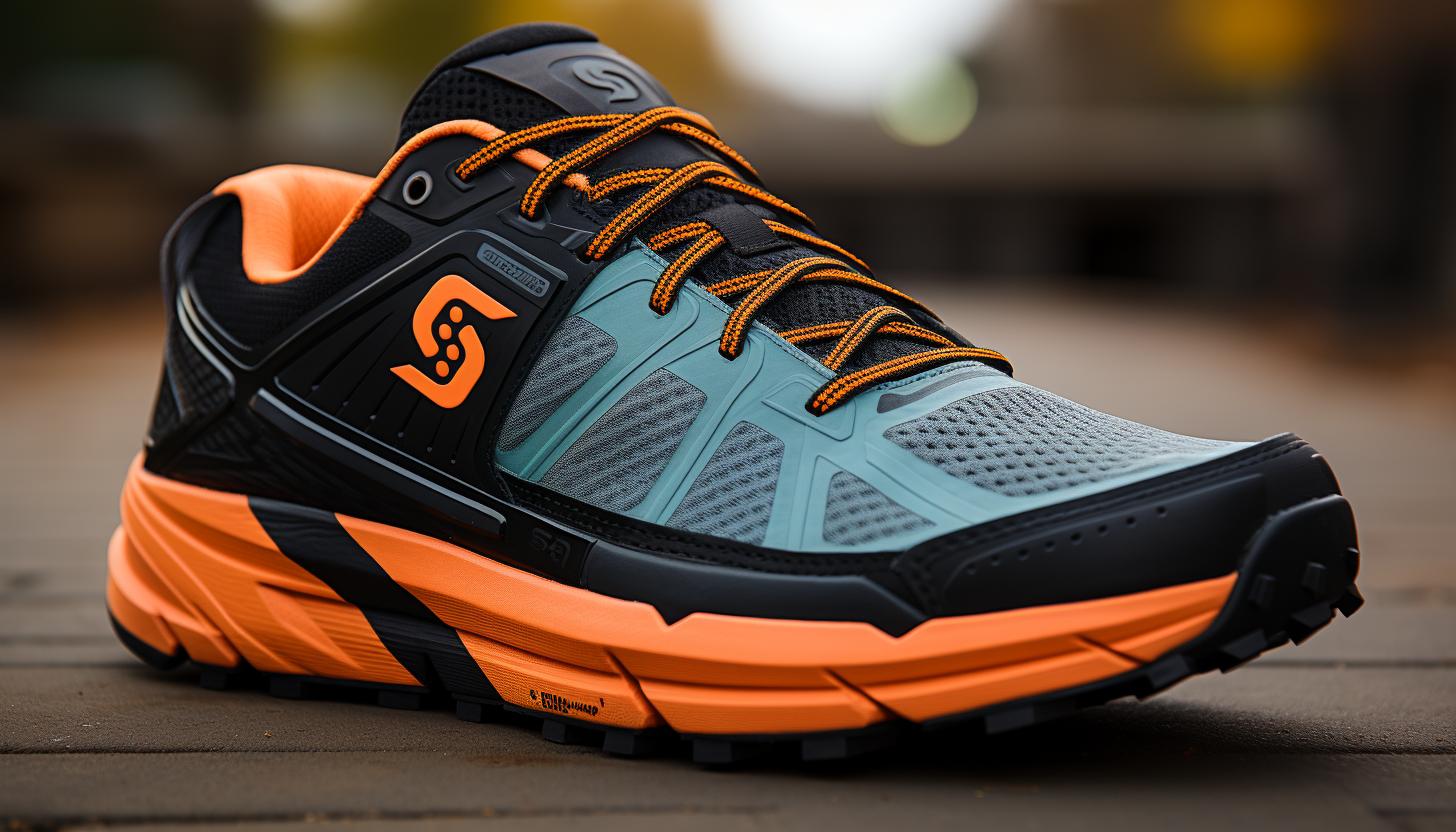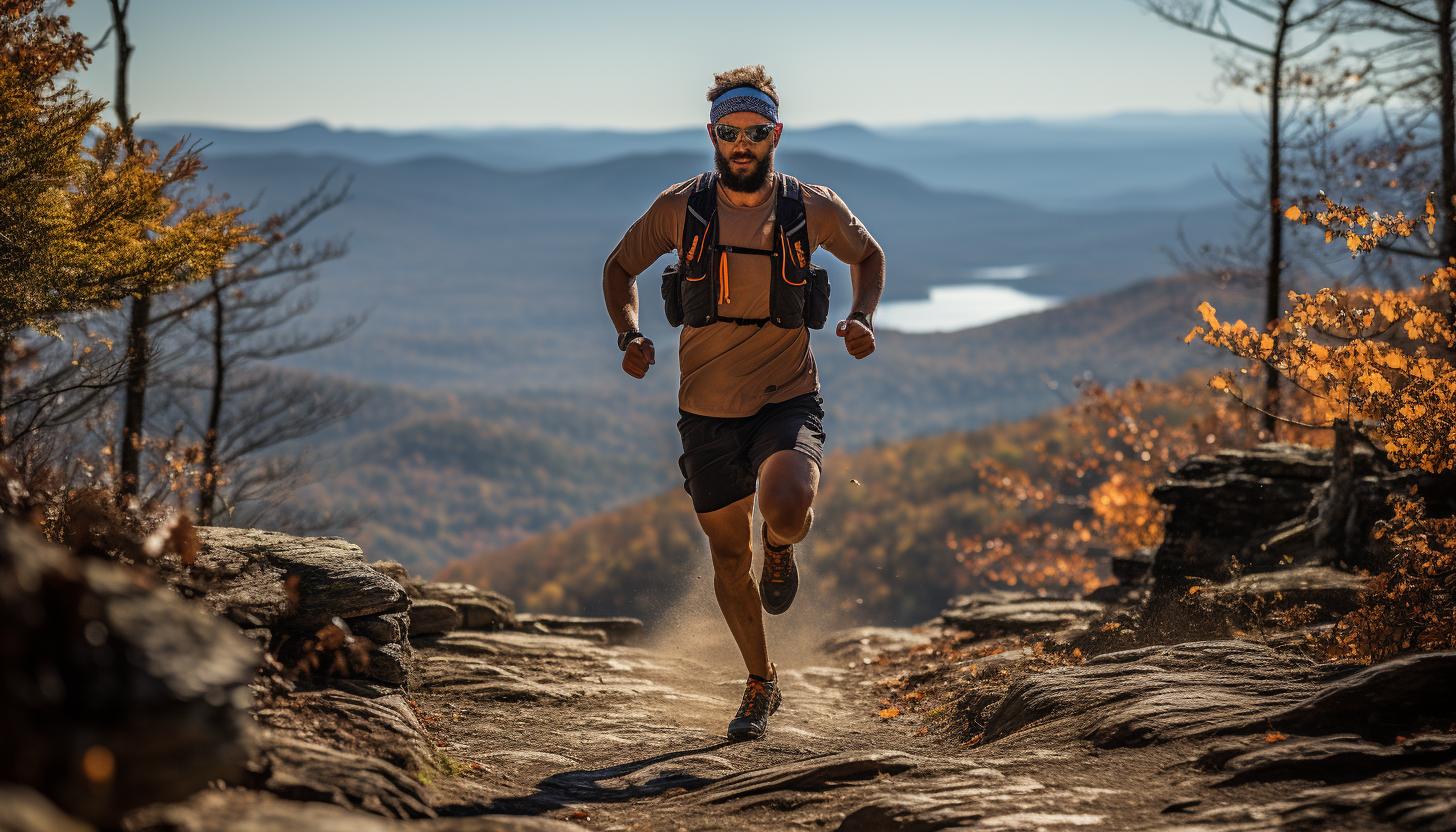Injury Prevention for Trail Runners: Tips and Techniques

Are you a trail runner seeking to stay injury-free? Look no further!
Our article on ‘Injury Prevention for Trail Runners: Tips and Techniques’ provides expert advice to keep you running strong.
From choosing the right footwear to incorporating effective stretching and warm-up exercises, we’ve got you covered.
Discover the secrets of proper trail running technique and form, as well as safety measures to keep you safe on rugged terrains.
Don’t forget about cross-training and strength training – they’re essential for preventing injuries.
Lace up those shoes and get ready for a safer, stronger run!
The Importance of Proper Footwear

To prevent injuries while trail running, it’s crucial that you wear the right footwear. Choosing the right shoes can make a significant difference in your overall performance and safety on the trails. When selecting trail running shoes, there are several features to consider.
Firstly, look for shoes with good traction. The outsole of a trail shoe should have deep lugs or multidirectional treads to provide excellent grip on various terrains such as mud, rocks, and loose dirt. This will help prevent slipping and improve stability.
Next, consider the level of protection offered by the shoe. Trail running often involves navigating rough terrain and obstacles like tree roots or sharp rocks. Look for shoes that offer ample cushioning in the midsole to absorb impact and protect your feet from potential injuries.
Additionally, pay attention to the shoe’s stability features. A well-designed trail shoe should provide adequate support around your ankles and arches to help prevent overpronation or excessive rolling of your foot during uneven terrain.
Lastly, ensure that the shoe fits properly. It should have enough room in the toe box for natural toe splay without being too loose or tight around your foot. Also, consider factors such as breathability and water resistance depending on the specific conditions you’ll be running in.
Stretching and Warm-Up Exercises

Before starting your trail run, it’s important to do some stretching and warm-up exercises. These pre-run routines are crucial for injury prevention and can help improve your performance on the trail. One effective warm-up technique is dynamic stretching, which involves moving parts of your body through a full range of motion. This type of stretching not only increases blood flow to your muscles but also improves flexibility and joint mobility.
To give you a better idea of some dynamic stretches you can incorporate into your pre-run routine, here is a table outlining five different exercises:
| Exercise | Description |
|---|---|
| Leg Swings | Stand next to a wall and swing one leg forward and back |
| Arm Circles | Extend your arms out to the sides and make circular motions |
| Walking Lunges | Take exaggerated steps forward while lunging with each leg |
| High Knees | March in place while lifting your knees as high as possible |
| Butt Kicks | Jog in place while kicking your heels up towards your glutes |
These dynamic stretches will help activate the muscles you’ll be using during your trail run, preparing them for the demands of the terrain ahead. By incorporating these exercises into your pre-run routine, you’ll reduce the risk of injuries like muscle strains or sprains.
Now that you’ve properly warmed up, let’s move on to discussing trail running technique and form.
Trail Running Technique and Form

Now let’s explore how proper trail running technique and form can enhance your performance on the trails.
When it comes to trail running, having the right technique and form is crucial for maximizing your efficiency and reducing the risk of injuries. One important aspect to focus on is your breathing technique. Proper breathing not only helps you maintain a steady rhythm but also ensures adequate oxygen supply to your muscles, improving endurance.
As you tackle uneven terrain, it’s essential to maintain a forward lean from your ankles, which helps with balance and stability.
In addition to technique, investing in the right trail running gear can greatly enhance your performance and overall experience. The most vital piece of gear is a good pair of trail running shoes that provide excellent traction and support for varied terrain. Wearing moisture-wicking clothing will help keep you comfortable and prevent chafing during long runs.
When it comes to uphill climbs, take shorter strides while maintaining an upright posture to conserve energy. On downhill descents, lean slightly forward with quick turnover strides to maintain control. Incorporating arm movement can also aid in maintaining balance.
Safety Measures for Trail Running

One important aspect of staying safe while trail running is being aware of your surroundings and potential hazards. To ensure your safety on the trails, it is crucial to have the right gear, as well as maintain proper hydration and nutrition.
When it comes to trail running gear, there are a few key items that you should have. First and foremost, invest in a good pair of trail running shoes that provide adequate traction and stability. This will help prevent slips and falls on uneven terrain. Additionally, wear moisture-wicking clothing to keep you dry and comfortable throughout your run. Consider wearing a hat or sunglasses to protect yourself from the sun’s rays.
Hydration is essential for trail runners, especially during longer runs or in hot weather conditions. Carry a lightweight hydration pack or handheld water bottle to ensure you stay hydrated throughout your run. It’s also beneficial to plan your route around water sources if possible.
Proper nutrition plays a vital role in maintaining energy levels during trail runs. Pack snacks such as energy bars or gels that are easy to carry and consume on the go. Fueling up before your run with carbohydrates can also provide an extra boost of energy.
Cross-Training and Strength Training for Injury Prevention

To prevent injuries while trail running, it’s important to incorporate cross-training and strength training exercises into your fitness routine. By engaging in these activities, you can improve your overall strength, flexibility, and endurance, which are crucial for navigating uneven terrains and unpredictable conditions on the trails.
One highly beneficial form of cross-training for trail runners is yoga. Yoga helps enhance your balance, stability, and body awareness, all of which are essential for maintaining proper form while running. Additionally, yoga promotes flexibility in key muscle groups such as the hips and hamstrings, reducing the risk of strains or sprains during trail runs.
Pilates is another excellent option for trail runners as it focuses on core strength and stability. A strong core helps stabilize your body while navigating challenging terrains and can also improve your running posture.
In addition to incorporating cross-training exercises like yoga and Pilates into your routine, proper nutrition plays a vital role in injury prevention. Consuming a well-balanced diet that includes adequate protein for muscle repair and carbohydrates for sustained energy is essential for supporting your body during intense trail runs. It’s also crucial to stay hydrated before, during, and after each run to prevent cramping and maintain optimal performance.
Conclusion
In conclusion, trail running can be an exhilarating and physically demanding activity. By following the tips and techniques outlined in this article, you can greatly reduce your risk of injury and enjoy a safe and rewarding experience on the trails.
Remember to invest in proper footwear, warm up properly, maintain good form, and take necessary safety precautions. Don’t forget to incorporate cross-training and strength training into your routine for added injury prevention.
With these strategies in place, you’ll be unstoppable on the trails – like a superhero with wings!






